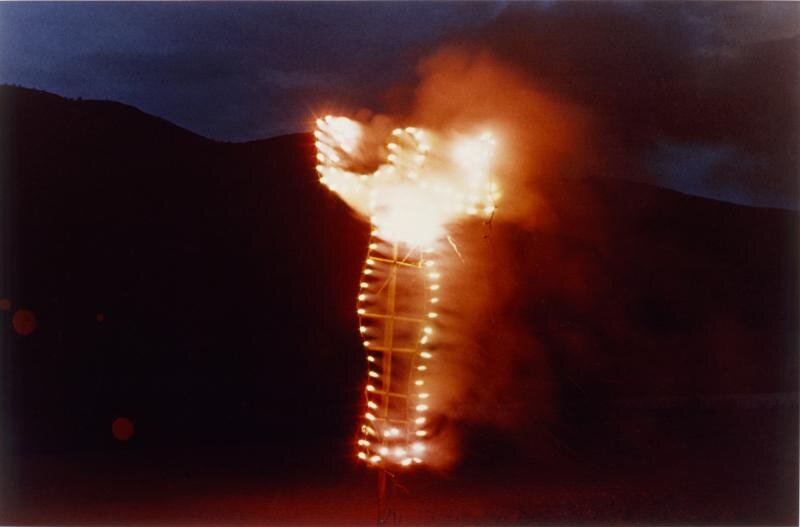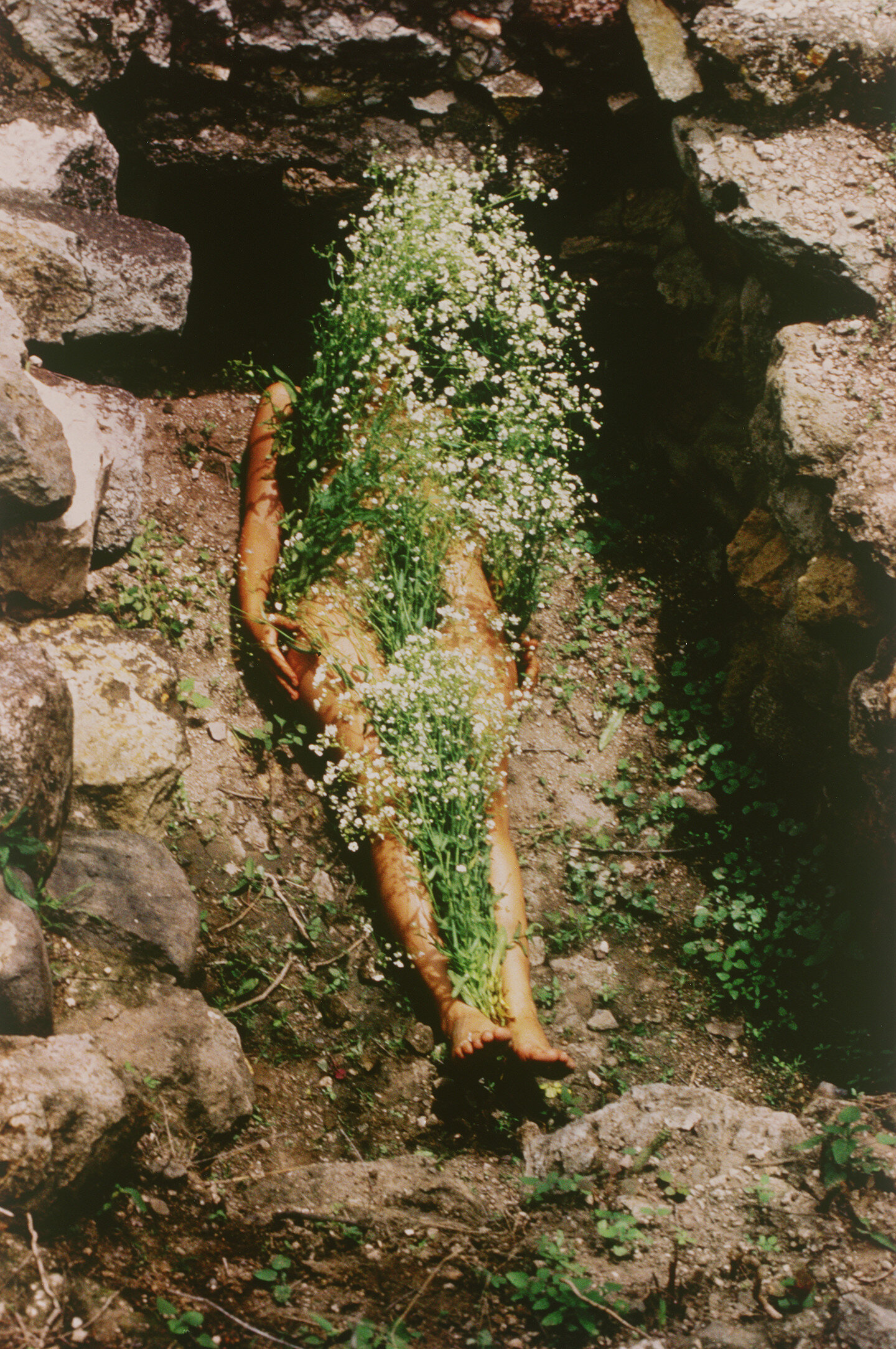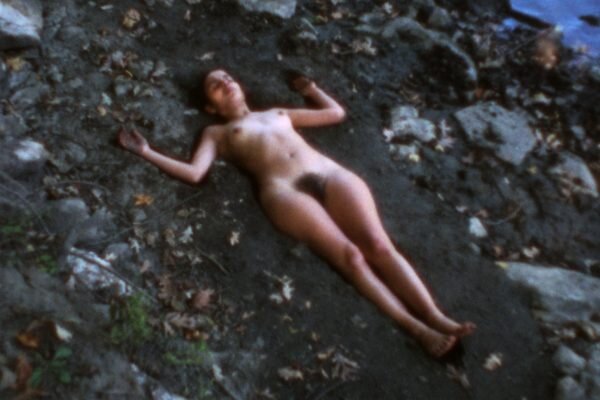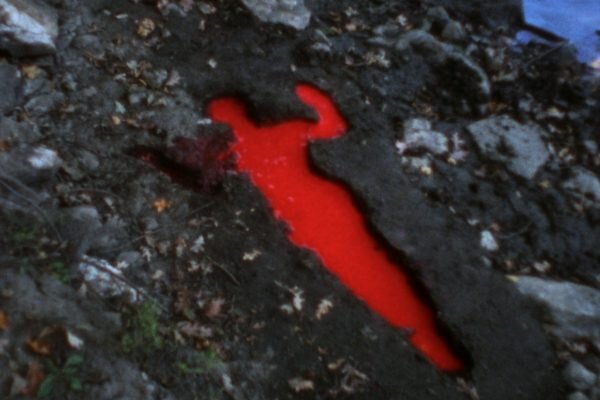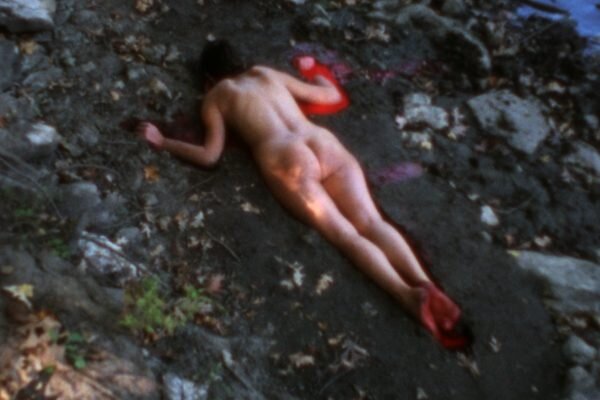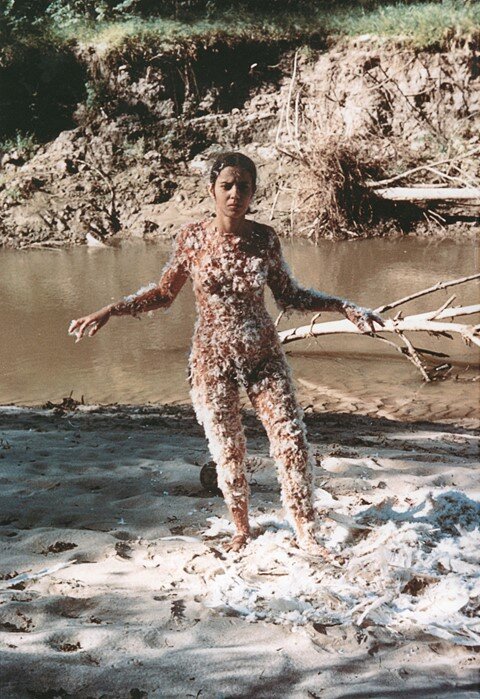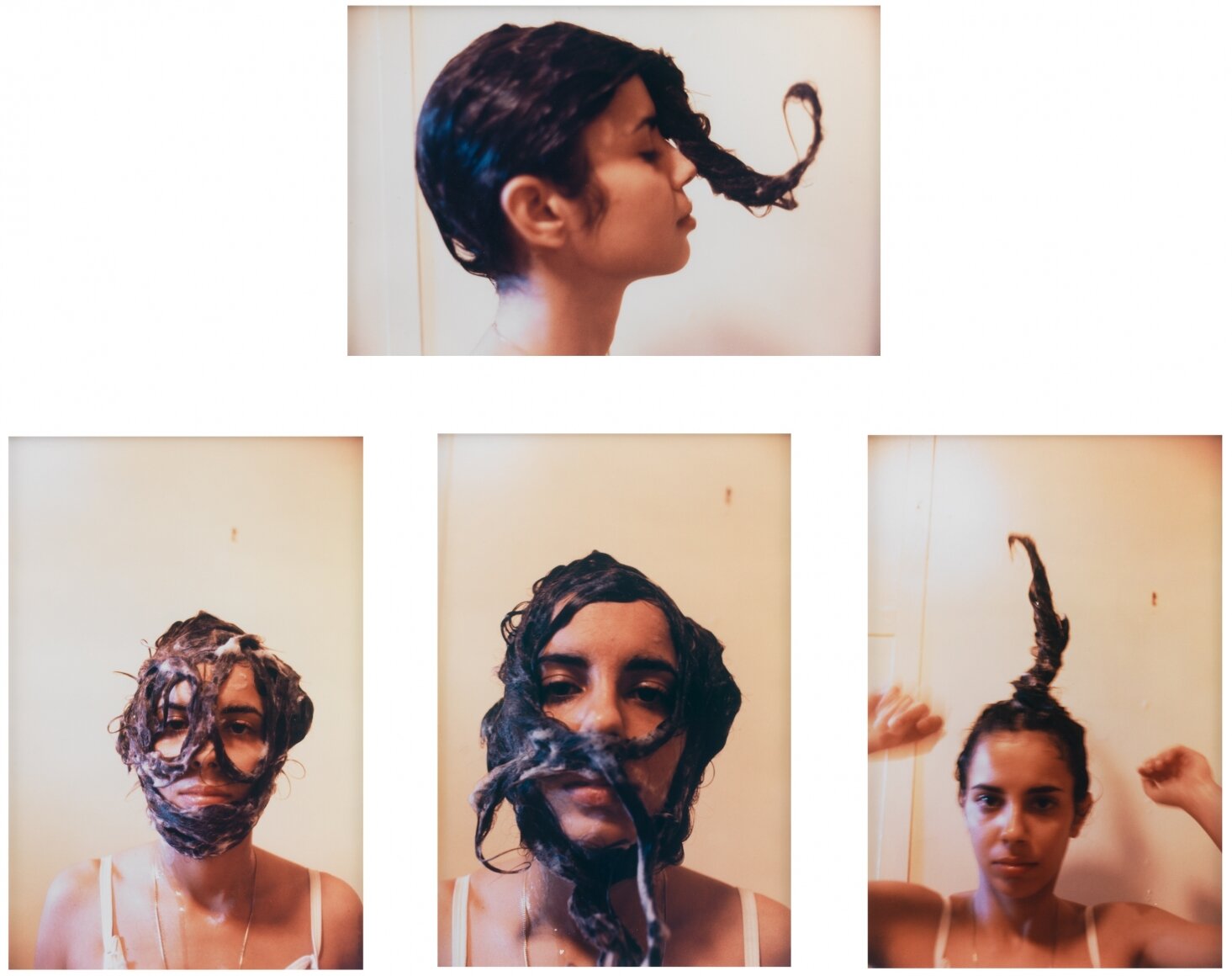Women Artist Series - Ana Mendieta.
Chapter 2 - Displacement.
Cuban Born artist Ana Mendieta is an icon that I’m always compelled to return to. She encompasses a certain ‘Biological Sap’ [Perez, 2017] that drives her to access new ideas surrounding self-representation through primitive forms of nature. Her relationship to organic matter, paired with the application of her body in her work created new territory in 1970’s contemporary performance and feminist practices.
‘Untitled’ (Self-Portrait with Blood) 1973
Displaced from her native land, Mendieta and her sister were exiled from Cuba under ‘Operation Peter Pan’ following the 1961 communist revolution. The experience of living in an American Catholic Orphanage meant that Ana felt like an ‘outsider’ to American culture. This sense of ‘otherness’ became ingrained in her identity, and is a continual motif referred to throughout her work: particularly through her use of non-western materials.
Arguably, Ana’s most notable works are her infamous ‘Silueta Series’. Mendieta began creating land interventions during her time at the University of Iowa, where she accompanied her professor (an archeologist specialist) to a ruin site. The installations are recorded on film, where Ana seems to be forming an archeological representation of the self. It could be argued that Mendieta inscribes traces of her body through nature as a form of therapy, perhaps attempting to heal her inertness as a child, and return to her original roots. In this sense, abjection takes the shape of Mendieta as a performance ‘Object’ through primal repression [Kristeva, 1980].
Silueta Sangrienta, 1975
Mendieta’s fixation with blood is prevalent many of her early works. Her film ‘Sweating Blood’ (1973) although ambiguous, encompasses abject femininity at its foundation. This ‘putative leakiness’ [Shildrick, 1997] defies the boundary of a proper and improper body, diluting the distinction between self/other & inner/outer. Using blood performatively in conjunction with her body may also suggests the playing with notions of mortality.
Sweating Blood, 1973
“Through my earth/body sculptures I become one with the earth - I become an extension of nature and nature becomes an extension of my body”
Blood and Feathers #2, 1974
Framed on the context of Santería Rituals*, in ‘Blood and Feathers #2’ (1974), death seems to be a prerequisite for new life. By the process of Self-Objectification to animal blood, Mendieta could arguably be spiritually reborn into a body cleansed from sin. This idea is especially prevalent through Mendieta’s Catholic beliefs, as in Catholic teaching, blood is metaphorical for redemption and cleanliness. These notions of birth/regeneration arguably resonate most with the audience at the end of the performance, where Mendieta holds this Shamanistic position, her arms outstretched, gesturing an alternate sense of self-representation.
* Santería is a hybrid religion constructed in the 19th Century by Cuban African slaves, mixing both Yoruba culture and Spanish Roman Catholicism.
Moffitt Building Piece, 1973
In ‘Moffit Building piece’ (1973), Mendieta uses blood in isolation from her own body as a politically active agent. Staged as an installation outside her apartment, the work acted as a social experiment to try and provoke a reaction from passers by. This visual depiction of domestic violence draws upon Ana’s own personal references from the rape and murder of a fellow student on campus, Sarah Ann Ottens [Frank, 2016]. Perhaps Mendieta’s work, from a feminist perspective, aims to reclaim marginalised female voices, portraying the dehumanising effects of violence on women during the 1970’s.
Ana’s death was a tragedy, and a poignant moment which echoed her life’s work. At aged 34, Mendieta fell from the 34th floor of her New York apartment window, whilst in the company of her husband, minimalist artist: Carl Andre. There is great speculation that Ana was murdered by Andre, however there was insufficient evidence to prove this, and he was acquitted from all charges. Therefore, the suspicious circumstances of Mendieta’s death make it difficult to isolate her work from her own demise.
Protestors outside of Tate Modern (2016)
Since Mendieta’s death, protestors have gathered in support of the late artist's life and work in the form of a feminist movement against male violence and misogyny. Tate Modern’s addition of Andre’s ‘Equivalent VIII’ to their collection display in 2016 sparked outrage. Angry crowds were disgusted by the gallery’s decision include Andre in the gallery space, supporting the alleged murderer by means of association.
Untitled (Cosmetic Facial Variations), 1972
Mendieta spent her whole life advocating against women’s violent oppression. Her free-spirited nature gave new impetus to 2nd wave feminism, and the overall landscape of performance and land art. It is the powerful and symbolic use of her own body with organic materials which makes her an emblem of a great Women Artist.
Useful Resources:
If you want to find out more about Ana Mendieta and her work, watch this lecture on youtube by Laura E. Pérez:
Ana Mendieta: Decolonialized Feminist and Artist (it’s the best resource about Mendieta I’ve found to date).
Or Support Round Lemon by purchasing one of the following:
Julia Kristeva, Powers of Horror: An Essay on Abjection.
You can find this book here.
Margrit Shildrick, Leaky Bodies and Boundaries: Feminism, Post-modernism and Bio Ethics.
You can find this book here.
Bibliography
Frank, P. (2016) The life of forgotten feminist artist Ana Mendieta, as told by her sister. Huffington Post.
Holy Bible (1973) Ephesians 1:7, New International Version. Available At: https://www.biblegateway.com/passage/?search=Ephesians%201:7&version=NIV
Kristeva, J. (1982) Powers of Horror, New York: Columbia University Press.
Pérez, L. (2017) Ana Mendieta: Decolonialized Feminist and Artist [video] Berkeley Arts and Design. Available at: https://www.youtube.com/watch?v=nVk4UBA6HGQ&t=2647s
Mclaughlin, R. (2018) Ana Mendieta: Artist or Martyr? ArtReview. Available at: https://artreview.com/ar-april-2018-feature-ana-mendieta/
O’Hagan, S. (2013) Ana Mendieta: death of an artist foretold in blood. The Guardian. Available at: https://www.theguardian.com/artanddesign/2013/sep/22/ana-mendieta-artist-work-foretold-death
Shildrick, M. (1997) Leaky Bodies and Boundaries - Feminism, Postmodernism and (Bio) Ethics. London: Routeledge.
Illustrations:
Mendieta, A. (1973) Untitled (Self-Portrait with Blood) [photograph] (398 × 310 × 32 mm) © The estate of Ana Mendieta, courtesy Galerie Lelong, New York. Photo: Courtesy of The estate of Ana Mendieta. Image Available online at: https://www.tate.org.uk/art/artworks/mendieta-untitled-self-portrait-with-blood-t13354
Mendieta, A. (1973) Imágen de Yágul [photograph] Color photograph. © The Estate of Ana Mendieta Collection. Available online at: https://www.e-flux.com/announcements/165634/covered-in-time-and-history-the-films-of-ana-mendieta/
Mendieta, A. (1975) Silueta Sangrienta, [Super-8mm film transferred to high-definition digital media] (Duration: 1:51 minutes) © The Estate of Ana Mendieta Collection, LLC. Courtesy Galerie Lelong. Available Online at: https://www.colby.edu/museum/exhibition/ana-mendieta-silueta-sangrienta/
Mendieta, A. Soul, Silhouette of Fireworks (1976) printed 1977 [chromogenic print] © 1976, Estate of Ana Mendieta. Available Online at: https://americanart.si.edu/artwork/anima-almasoul-34661
Mendieta, A. Sweating Blood (1973) [Super-8mm film transferred to high-definition digital media] color, silent. Courtesy of Ana Mendieta Collection, LLC and Galerie Lelong, New York. Available Online at: https://filthydreams.org/2016/02/21/bleed-like-me-death-and-rebirth-in-ana-mendietas-experimental-and-interactive-films/
Mendieta, A. (1974) Blood and Feathers #2, [super 8mm film still] © The Estate of Ana Mendieta Collection, LLC. Courtesy Galerie Lelong & Co. Available online at: https://www.anothermag.com/art-photography/11743/ana-mendieta-pioneer-earth-body-works-middelheim-museum-antwerp
Mendieta, A. (1973) Moffitt Building Piece [two 35-mm color slides] © The Estate of Ana Mendieta Collection, LLC. Available Online at: https://www.artforum.com/print/201509/bodily-rites-the-films-of-ana-mendieta-55531
Wynter, L. (2016) Image of protestors outside of Tate Modern. Image courtesy of Liv Wynter. Available online at:https://www.artsy.net/article/artsy-editorial-how-ana-mendieta-became-the-focus-of-a-feminist-movement
Mendieta, A. (1972) Untitled (Cosmetic Facial Variations) [photographs] (40.6 x 50.8 cm) Galerie Lelong & Co. Available online at: https://www.galerielelong.com/artists/estate-of-ana-mendieta/slideshow?view=slider#4




